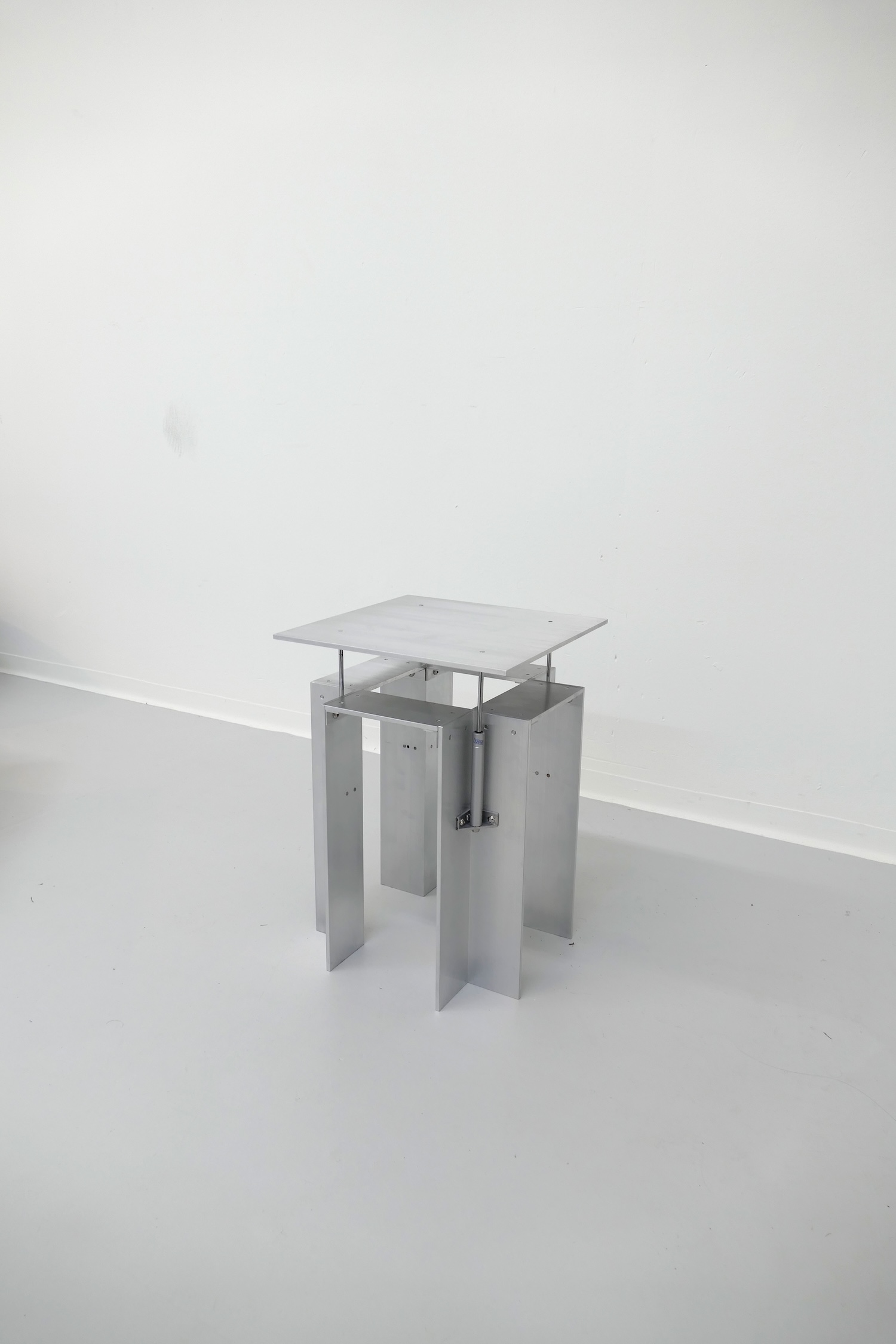Shift Seat is a minimalist stool created by Zurich-based designer Fabio Lauria. The first time you encounter the Shift stool, there’s a moment of hesitation—a split second where your body instinctively questions what will happen when you sit down. That moment of uncertainty is precisely what Zurich-based designer Fabio Lauria intended. The seat hovers above four eccentric gas springs, promising not stability but controlled motion, not static rest but dynamic engagement.
“I’m interested in that brief moment of surprise,” Lauria explains, “when users discover the object doesn’t behave as expected, and then how quickly they begin to play with those new possibilities.”
This playful disruption characterizes Lauria’s approach. Rather than hiding the mechanical elements, he celebrates them, allowing the raw industrial components to remain visible beneath a minimal seat form. The springs—typically concealed within office chairs—become the visual and functional protagonists, transforming a utilitarian component into an expressive design element.
The stool’s mechanics create a seating experience that responds to the user’s movements, weight shifts, and posture changes. This kinetic quality connects to a rich lineage of dynamic seating experiments, from Achille Castiglioni’s iconic Sella stool to more recent explorations in active sitting by designers like Konstantin Grcic. Yet Lauria pushes further by embracing unpredictability as a feature rather than a flaw.
What makes the Shift particularly intriguing is how it manifests Lauria’s philosophy of material honesty. “I want materials to retain their character,” he notes. The industrial components remain unadorned, their engineered precision contrasting with the organic, unpredictable movements they enable. This tension between mechanical precision and fluid motion creates the stool’s distinctive personality.
The Shift challenges our expectations about what a stool should do and be. Traditional seating aims to disappear beneath us, providing unobtrusive support. Lauria inverts this relationship, creating a seat that asserts its presence and requires active participation from the sitter. This engagement transforms a mundane act—sitting—into a conscious experience, bringing awareness to a bodily function we typically perform without thought.




